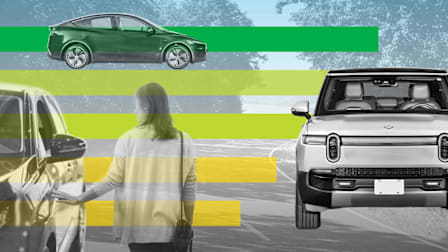Auto Safety Regulator Pressures Tesla to Issue a Recall Related to a Software Update
Over-the-air updates don’t address the real problem of inadequate driver monitoring

The National Highway Traffic Safety Administration (NHTSA) fired the latest salvo related to its investigation into Tesla’s advanced driver assistance systems on Tuesday, questioning why the manufacturer didn’t initiate a recall when it sent an over-the-air software update.
In a letter from the agency to Eddie Gates, Tesla’s field quality director, regulators requested more information about software updates Tesla sent to Autopilot-equipped cars last month to improve the system’s detection of emergency vehicles in low-light conditions. There have been at least 11 incidents and one death involving Teslas running into emergency vehicles parked near roadside crash scenes, despite the fact that the emergency units had flashing lights on them. NHTSA has linked these crashes to Tesla’s active driving assistance systems, and the incidents are the basis of the investigation.
Autopilot is Tesla’s suite of driver-assist features that automate some steering, braking, and acceleration. Tesla’s Full Self-Driving Capability is a collection of features that can assist the driver with parking, changing lanes on a highway, and coming to a complete halt at traffic lights and stop signs.
Among the crashes being investigated is one that occurred in December of last year, when a man driving a Tesla Model 3 at highway speed rear-ended a fire truck that was parked behind a crash scene on Interstate 70 near Indianapolis. The driver, Derrick Monet, 25, survived the crash, but his wife, Jenna Monet, 23, who was sitting in the front passenger seat, died from her injuries.
“CR’s position is that crashes like these can be avoided if there is an effective driver monitoring system, and that’s the underlying problem here,” says Jake Fisher, senior director of CR’s Auto Test Center.
Over-the-air software updates usually aren’t sent to respond to defects, Fisher points out, but are meant to provide incremental improvements that can lead to safer driver assistance systems.
“It’s critical for NHTSA to make sure companies issue a recall whenever there’s a safety defect—while also recognizing that over-the-air updates, when used properly, can deliver continuous safety improvements on our roads,” says William Wallace, CR’s manager of safety policy. “Over-the-air updates are only going to get more common, and some of them will improve a car’s ability to avoid a crash. As NHTSA enforces recall requirements, it should also be clear that companies can—and should—use over-the-air updates proactively to make our roads safer.”




















